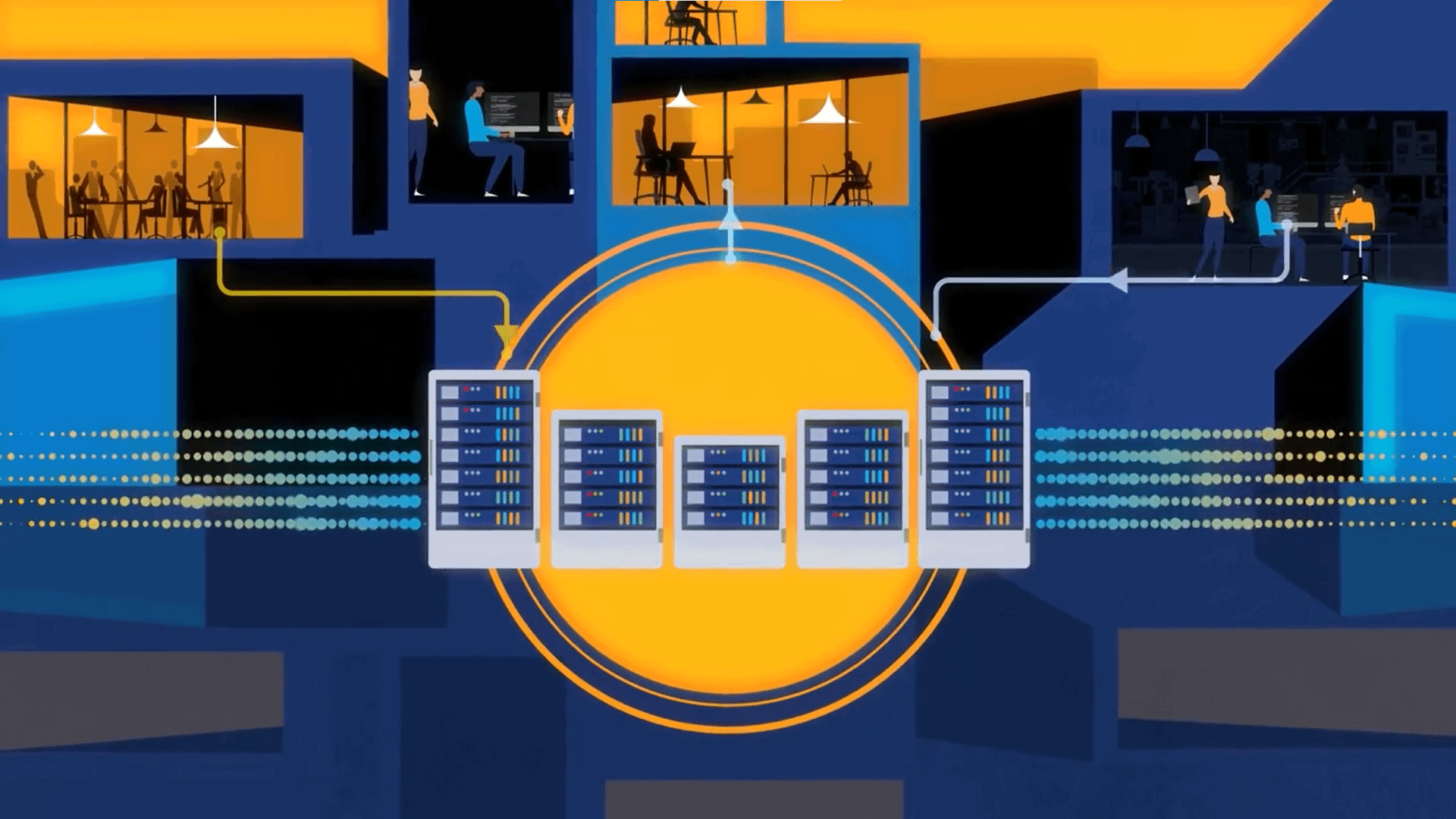
The network demands of today’s distributed AI workloads was apparent throughout this week’s annual Global NaaS Event (GNE).
Training AI models and running them is often a distributed endeavor. Various compute and data resources are typically deployed strategically to optimize performance and reduce costs. Such a distributed model has placed new emphasis on the underlying network infrastructure that connects the different elements. That network aspect of AI was the focus of this week’s GNE 2025 conference in Arlington, TX.
The AI influence on the annual Global NaaS Event (GNE) was apparent throughout the conference. In past years, the conference’s main theme was network-as-a-service (NaaS) itself. Over the last few years, the conference host Mplify (formerly MEF), the international organization composed of service providers, technology solutions providers, and enterprise users, has focused on developing frameworks, lifecycle service orchestration (LSO) APIs, and certifications that allowed NaaS offerings to be reliably ordered and securely delivered as needed.
See also: Why Modern AI Needs NaaS
A Focus on NaaS for AI
Earlier this year, Mplify expanded its purview to address the need for a robust network to support AI, distributed intelligence, and modern offerings such as Neoclouds and GPUs-as-a-Service.
Mplify CTO Pascal Menezes put the network aspect of AI into perspective with his opening remarks. “The network becomes critically important. It has to have performance guarantees and deliver quality and security,” said Menezes. “It also has to be dynamic, fluid on demand, programmable, and automated.”
He noted several key areas that Mplify and others are focusing on to support NaaS for AI.
To start, he pointed out that the various transport methods for AI are becoming increasingly strategic. There is a great demand for bandwidth to support AI workloads. The industry is responding with new and more offerings in areas such as Carrier Ethernet, IP broadband, and Low Earth Orbit (LEO) satellites.
For such offerings to support distributed AI workloads, there needs to be a way to order, use, and manage the various transport technologies as if they were a single entity. To that end, Mplify announced at the conference that it was joining the GSMA Open Gateway Framework to develop unified network APIs that work across both wired and wireless domains, supporting AI connectivity.
In particular, Mplify stated that it will help advance cross-domain integration from wireless to wireline environments by utilizing its LSO APIs to complement the GSMA Open Gateway Framework’s CAMARA APIs for mobile networks. The combination will help enable seamless end-to-end connectivity.
See also: What Are Neoclouds and Why Does AI Need Them?
AI Drives Carrier Ethernet Certification Demands
Interestingly, Menezes noted that this year Mplify saw a surge in demand for Carrier Ethernet certifications from providers of all types. They needed the certification as enterprise and service provider customers were adding certification requirements to transport and connectivity services RFPs for their AI efforts.
The surge was quite unexpected. Carrier Ethernet has been in use for over two decades and is widely deployed and utilized. Mplify, under its previous name MEF, was instrumental in Carrier Ethernet’s success due to its frameworks, LSO APIs, and certifications.
To support the new demand for certification, Mplify redefined Carrier Ethernet certification for the AI era. Specifically, Mplify’s Carrier Ethernet certification now defines two complementary profiles, Carrier Ethernet for Business and Carrier Ethernet for AI, that validate readiness for both enterprise and AI-driven services.
Why the need for the new certification? “AI is redefining what networks must deliver,” said Daniel Bar Lev, Chief Product Officer at Mplify. “With the Carrier Ethernet for AI certification, Mplify is extending the proven foundation of Carrier Ethernet for Business into the AI era, equipping providers to deliver deterministic performance, automated, and intelligent networks that power the next generation of NaaS and agentic AI applications.”
Designed for AI-intensive, real-time workloads, Carrier Ethernet for AI certification builds on the Carrier Ethernet for Business certification and validates the reliability, flexibility, and efficiency needed to coordinate AI models and peripheral devices. According to Mplify, key use cases include data center–to–data center and edge-to-data center connectivity for distributed AI training and inference, as well as connectivity between AI peripherals or applications and the edge GPU clusters.
See also: What is NaaS and Why Does AI Need It?
NaaS, AI, and Automation
Training AI models and running AI workloads requires more than pure transport and connectivity capabilities. Menezes noted that there are additional areas that are currently receiving attention or will require more attention in the near future.
One aspect Mplify is addressing is that automation is evolving from the east-west flow between enterprises and partners to automating the interactions between AI agents and models. He noted this requires robust identity frameworks, authentication, authorization, and auditing capabilities.
At the conference, the Mplify Enterprise Leadership Council (ELC) issued a manifesto on LSO automation titled Accelerating Enterprise Connectivity and Automation through LSO APIs. The manifesto calls on service providers to adopt Mplify’s standardized business and operational APIs. Specifically, the manifesto urges service providers to replace manual processes with standardized, machine-readable APIs that bridge enterprise IT systems and provider networks. Such APIs enable real-time automation across global networks.
In the manifesto, the ELC group emphasized that automation must span the entire supply chain, from the enterprise edge to provider networks and into the cloud, to deliver the agility, scalability, and assurance that today’s digital businesses require.
Future Issues
AI is expected to play a crucial role in various aspects of business and government operations in the future.
As such, cybersecurity is critical for protecting AI flows, classifying AI applications, enforcing zero-trust policies, scanning and isolating anomalous AI agents and models. These are all areas Mplify will support and expand its existing efforts.
Also in the near future, governments worldwide will turn to AI to deliver more services and support a wider range of operations. Such activities need enhanced security. To that end, Menezes noted that Sovereign AI, where countries build their own AI infrastructure and models, is a major trend. Today and in the near future, expect telecommunications companies and service providers to play a central role in providing the necessary transport, data centers, and GPU-as-a-service capabilities to support these sovereign AI deployments.






























